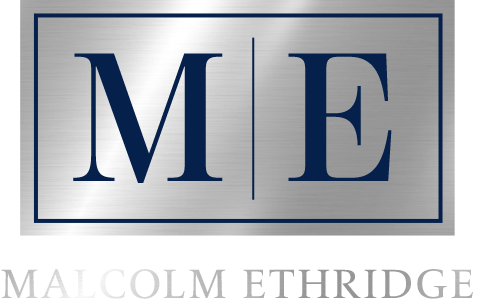The Mega Backdoor Roth Is Still Alive; Take Advantage While You Can.
You may have heard of the financial maneuver colloquially referred to as the Backdoor Roth IRA which allows high earners who make above IRS-established income limits to make contributions to a Roth IRA as long as they follow some strict guidelines. There is, however, a similar—albeit lesser known—strategy available to many of those same high earners known as the Mega Backdoor Roth. This allows individuals to contribute larger amounts to a Roth 401(k) than the standard contribution limit, which in 2023 is $22,500 (or $30,000 if you are 50 years of age or older).
While both options ultimately allow you to convert your savings to Roth, the Mega Backdoor Roth is more valuable because it enables contributions well beyond the $6,500 limits (or $7,500 if you are 50 years of age or older) of a Roth IRA. And since the Mega Backdoor Roth is essentially the 401(k)-plan equivalent of the Backdoor Roth IRA, these two strategies can be used contemporaneously.
There are two noteworthy components to the Mega Backdoor Roth strategy: (1) A 401(k) plan must allow for additional “after-tax” contributions, and (2) “in-service withdrawals” of those after-tax dollars. Here is a comprehensive list of the companies currently offering this option within the 401(k) plan.
If you are unsure about your plan’s details, your company's Human Resources department or benefits administrator should be able to provide you with the necessary information regarding in-service withdrawals and after-tax contributions. Many employers will also provide access to this information via their company retirement plan website.
Normally, retirement plans are designed to be long-term savings vehicles, and withdrawals are generally not allowed until an employee reaches a certain age (typically 59 ½) or meets other specific criteria, such as retirement or separation of service. An in-service withdrawal, however, allows you to move after-tax contributions and their associated earnings out of the 401(k) plan while you are still employed with the company.
Also, while 401(k) plans are not required to offer after-tax contributions, some companies allow their employees with to make additional "after-tax" or “excess” contributions beyond the regular contribution limits. This means that after an individual has contributed the $22,500 or $30,000 maximum allowed, they could opt to contribute additional funds on an after-tax basis.
Let’s say, for example, a 40-year-old worker contributed $22,500 to her 401(k) plan for the year and received a $10,000 matching contribution from her employer. She would be limited to an after-tax contribution of $33,500. This represents the maximum amount available to be rolled over to a Roth IRA for the year using the Mega Backdoor Roth strategy.
Once you've contributed after-tax dollars to your 401(k), converted them to Roth, and made the subsequent in-service withdrawal, you can then roll the proceeds into a Roth IRA. And on an ongoing basis, like the Backdoor Roth IRA, you could plan to make after-tax contributions into your 401(k) and subsequently convert to a Mega Backdoor Roth each year.
For 2023, total 401(k) contributions comprised of pre-tax, after-tax, employer matching contributions, and any employer profit sharing are capped at $66,000 (or $73,500 if you are 50 years of age or older). If your employer does match 401(k) contributions, you must subtract the matched amount as well as your own traditional contribution from the capped value (whichever applies) to determine your Mega Backdoor Roth limit for the year.
As with all retirement savings, the dollar amount you can contribute to a Mega Backdoor Roth has its limitations. Calculating how much you can contribute each year depends on the aforementioned maximum 401(k) contribution limits as well as whether your employer makes any contributions on your behalf.
It is worth noting that although the Mega Backdoor Roth enables a 401(k) plan participant to contribute significant after-tax funds and subsequently convert those funds to a Roth IRA with little to no tax liability, this strategy should not be viewed as a mechanism to reduce income taxes. Instead, by using this strategy, high-income earners can effectively contribute larger amounts to a Roth account than the regular contribution limits would allow, providing an opportunity for tax-free growth and withdrawals in retirement—assuming you follow the applicable Roth IRA rules.
********************
Malcolm Ethridge, CFP® is the Managing Partner of Capital Area Planning Group based in Washington, DC. He is also the Managing Partner of Capital Area Tax Consultants.
Malcolm’s areas of expertise include retirement planning, investment portfolio development, tax planning, insurance, equity compensation and other executive benefits.
Disclosures:
The information provided is for educational and informational purposes only, does not constitute investment advice, and should not be relied upon as such. Be sure to consult with your legal advisors before taking any action that could have tax and legal consequences.
Investments in securities and insurance products are:
NOT FDIC-INSURED | NOT BANK-GUARANTEED | MAY LOSE VALUE
